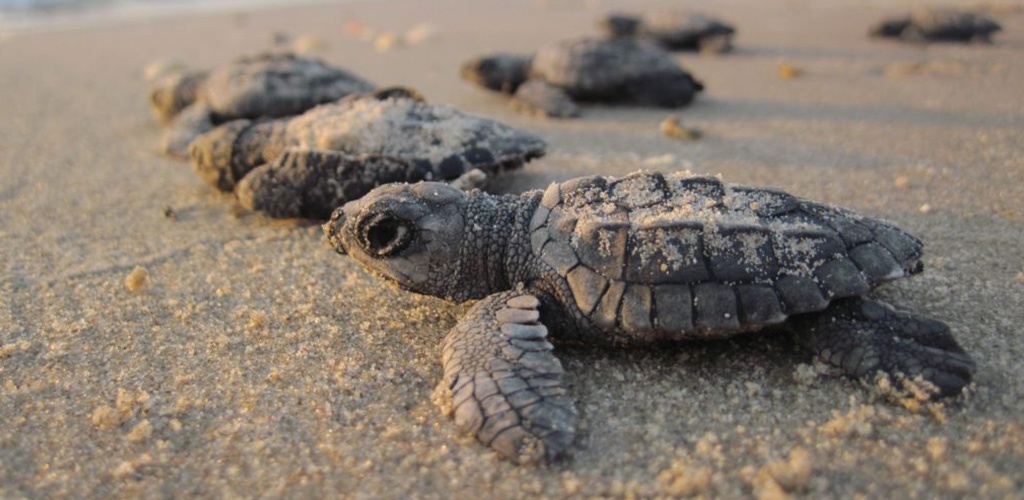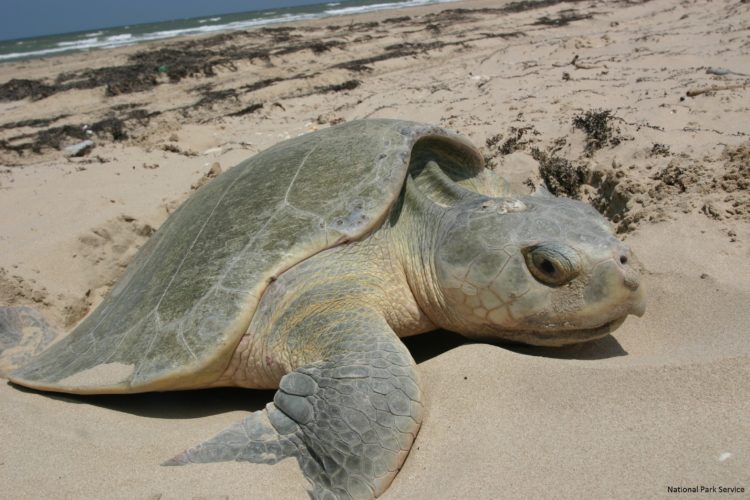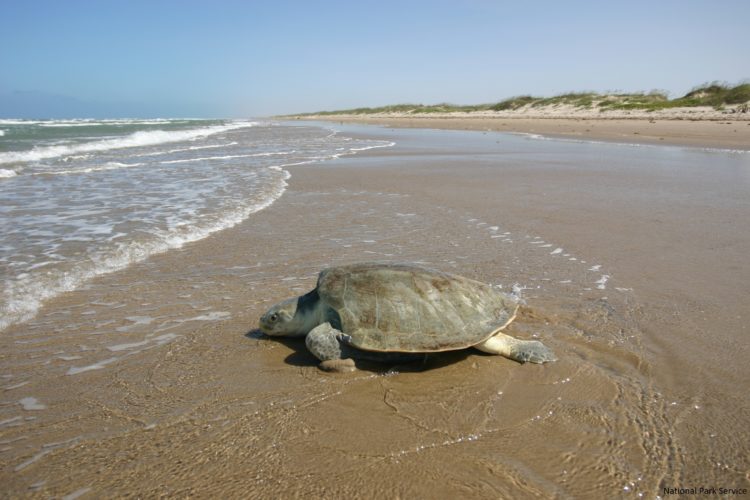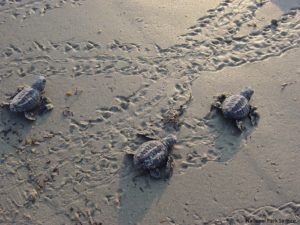We have much more to do and your continued support is needed now more than ever.
Help the Kemp’s Ridley Sea Turtle
Celebrate National Estuaries Week and Help the Wildlife that Live There Today

One species that profits from the wide range of benefits estuaries have to offer is the Kemp’s ridley sea turtle, found primarily in the Gulf of Mexico. The Kemp’s ridley is the world’s smallest sea turtle, and also the most endangered sea turtle species.

These little guys are only about 2 feet in shell length and weigh up to 100 pounds. They generally feast on a salty smorgasbord of crabs as well as other shellfish, some finfish and even jellyfish. As adults, these sea turtles are often in deeper waters, but juvenile Kemp’s ridleys can often be found in the Gulf’s estuaries. This may be because one of their favorite foods – blue crabs – spend portions of their life cycles in estuaries as well.
Like most wildlife in the Gulf, however, the Kemp’s ridley has been in trouble since the 2010 Deepwater Horizon oil spill. Researchers found that as many as 20 percent of Kemp’s ridley nesting females were killed during the spill. There are also indications that the sea turtle’s feeding patterns may have changed in the aftermath of the disaster. Since 2010, nest counts have been significantly below expectations, a disturbing trend for a species already so threatened.

After the Deepwater Horizon disaster, Congress created the RESTORE Council, a federal-state body responsible for developing a Comprehensive Plan to guide restoration efforts in the Gulf. The Council recently published an important update to its comprehensive plan which will guide restoration investments for years to come. This update expresses a commitment to large-scale projects that benefit the health of the Gulf ecosystem as a whole, and to a more robust science-based review of projects.

Since the Comprehensive Plan directs how the RESTORE Council will administer over $3 billion in restoration efforts, it is crucial that this plan be as strong as possible to ensure the best investments are made to improve the health of the Gulf as a whole for wildlife.
Take action now to help Kemp’s ridley sea turtles and other wildlife in the Gulf of Mexico. Tell the RESTORE Council to help wildlife by making improvements to the Comprehensive Plan. What better way to celebrate National Estuaries Week?
Take Action





















